Search
- Page Path
-
- HOME
- Search
- Original Article
- Neonatology (Perinatology)
- Prevalence of anxiety, depression, and stress among parents of neonates admitted to neonatal intensive care unit: a systematic review and meta-analysis
- Asha P. Shetty, Kurvatteppa Halemani, Alwin Issac, Latha Thimmappa, Sanjay Dhiraaj, Radha K, Prabhaker Mishra, Vijai Datta Upadhyaya
- Clin Exp Pediatr. 2024;67(2):104-115. Published online November 14, 2023
-
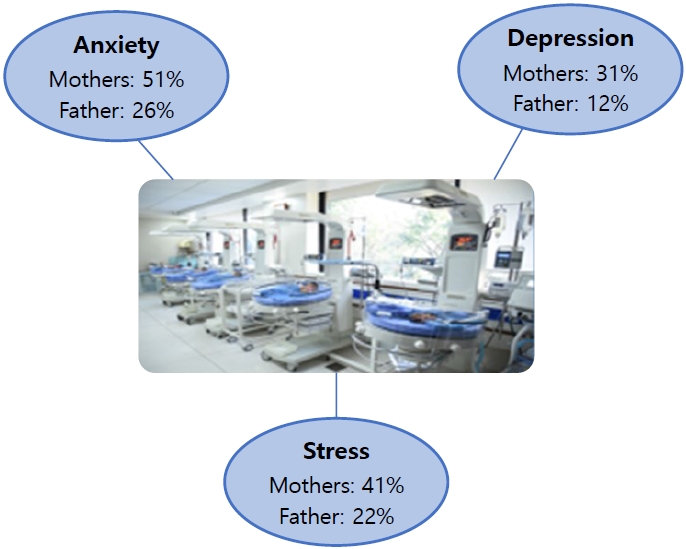
Question: What emotions do parents experience when their newborns are admitted to the neonatal intensive care unit (NICU)?
Finding: Mothers experienced more anxiety (51%), depression (31%), and stress (41%) symptoms than fathers (26%, 12%, and 22%, respectively).
Meaning: Parents often experience anxiety, stress, and depression following NICU admission. Healthcare workers are responsible for providing regular parental counseling.
- Developmental and Behavioral Medicine
- Neonatal risk factors associated with attention-deficit/hyperactivity disorder: an umbrella review
- Ensiyeh Jenabi, Erfan Ayubi, Sajjad Farashi, Saeid Bashirian, Fereshteh Mehri
- Clin Exp Pediatr. 2023;66(10):441-446. Published online July 14, 2023
-
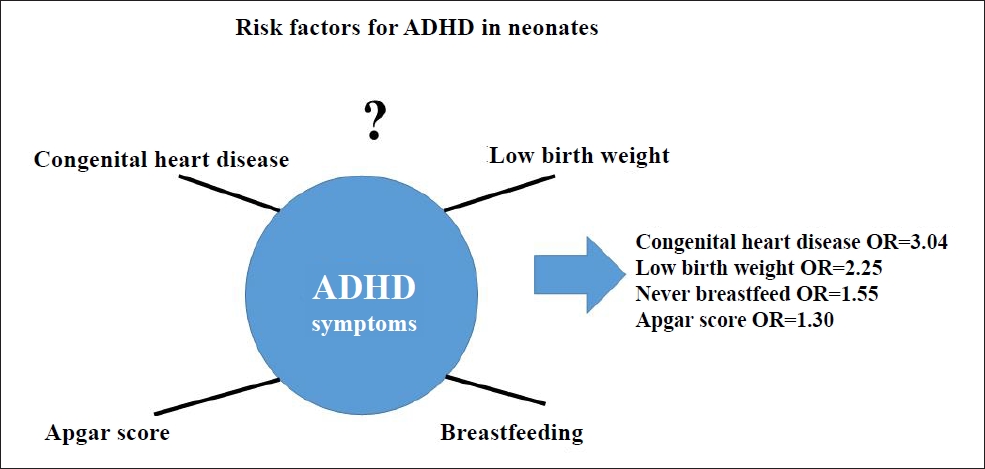
Question: The risk factors for attention deficit hyperactivity disorder (ADHD), such as breastfeeding, congenital heart disease, and low birth weight, in neonates are not well understood.
Finding: This umbrella review obtained significant effect sizes for ADHD for congenital heart disease (odds ratio [OR], 3.04), low birth weight (OR, 2.25), never breastfed (OR, 1.55), and Apgar score (OR, 1.30).
Meaning: Congenital heart disease, low birth weight, lack of breastfeeding, and Apgar scores were significant factors for ADHD.
- Review Article
- Neonatology (Perinatology)
- Neonatal family-centered care: evidence and practice models
- Juyoung Lee
- Clin Exp Pediatr. 2024;67(4):171-177. Published online June 14, 2023
-
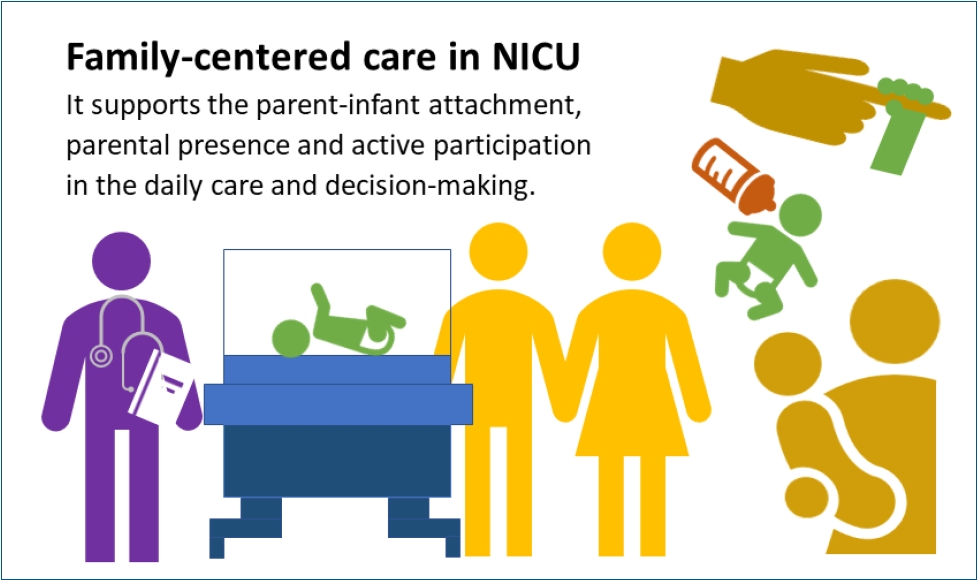
· Concrete evidence exists of early parent-infant attachment supported by family-centered care (FCC) in the neonatal intensive care unit.
· FCC involves the parents’ presence and participation in the infant’s care and decision-making.
· A private and comfortable space should be provided. A single-family room is ideal; however, a quiet space with a recliner can be a good alternative.
· Care culture changes and staff training are required.
- Neurology
- Neonatal seizures: diagnostic updates based on new definition and classification
- Eun-Hee Kim, Jeongmin Shin, Byoung Kook Lee
- Clin Exp Pediatr. 2022;65(8):387-397. Published online April 4, 2022
-
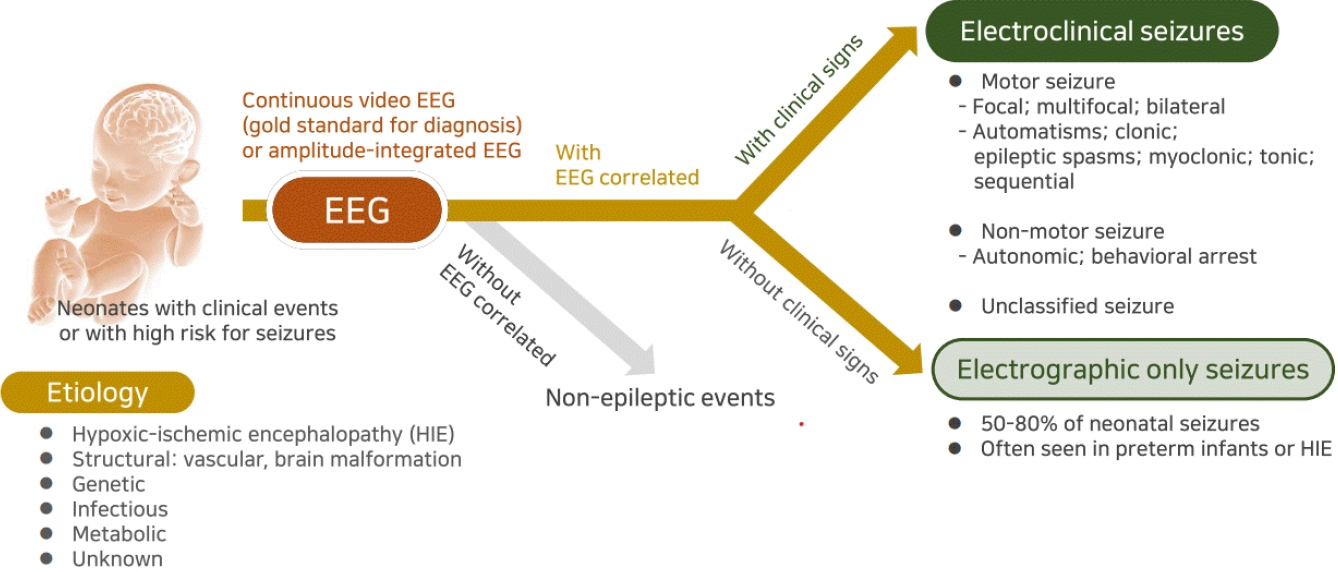
· Neonatal seizures are often electrographic-only seizures without clinical signs; therefore, the identification of electrical seizure activity on electroencephalography is the gold standard for diagnosis.
· Clinical signs of neonatal seizures are divided into motor or nonmotor seizures, and motor seizures are mostly focal or multifocal.
· Most neonatal seizures are caused by acute symptomatic etiologies, but in cases of intractable seizures, structural, genetic, or metabolic etiologies should be investigated.
- Original Article
- Neonatology (Perinatology)
- Neonatal sepsis-causing bacterial pathogens and outcome of trends of their antimicrobial susceptibility a 20-year period at a neonatal intensive care unit
- Woo Sun Song, Hye Won Park, Moon Youn Oh, Jae Young Jo, Chae Young Kim, Jung Ju Lee, Euiseok Jung, Byong Sop Lee, Ki-Soo Kim, Ellen Ai-Rhan Kim
- Clin Exp Pediatr. 2022;65(7):350-357. Published online December 9, 2021
-
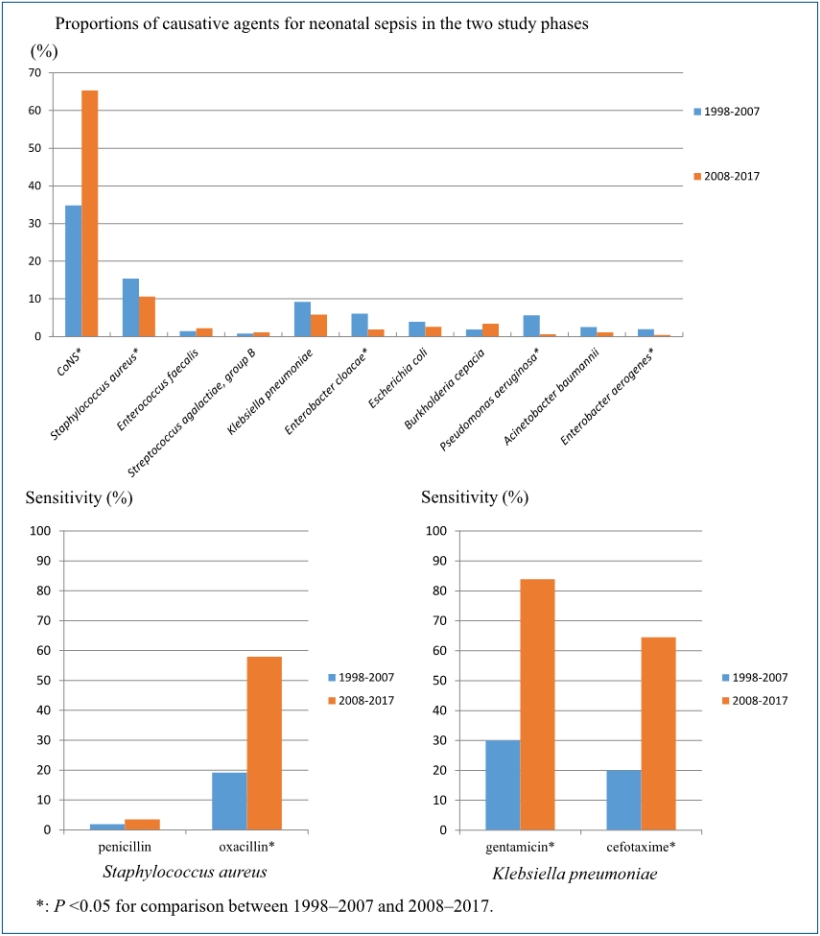
Question: What is prevalence of bacterial pathogens causing sepsis and their antimicrobial susceptibility over 20 years?
Finding: Coagulase-negative remains most common causative organism. The most common gram-negative organism was Klebsiella pneumonia. The susceptibility of staphylococcus aureus and K. pneumonia showed increased susceptability to oxacillin, cefotaxime and amikacin, gentamicin, respectively.
Meaning: Answers to the question asked is important in choosing antimicrobials and to monitor emergence of multidrug-resistant organisms.
- Review Article
- Neurology
- Cognitive outcomes in late childhood and adolescence of neonatal hypoxic-ischemic encephalopathy
- Bo Lyun Lee, Hannah C. Glass
- Clin Exp Pediatr. 2021;64(12):608-618. Published online May 24, 2021
-
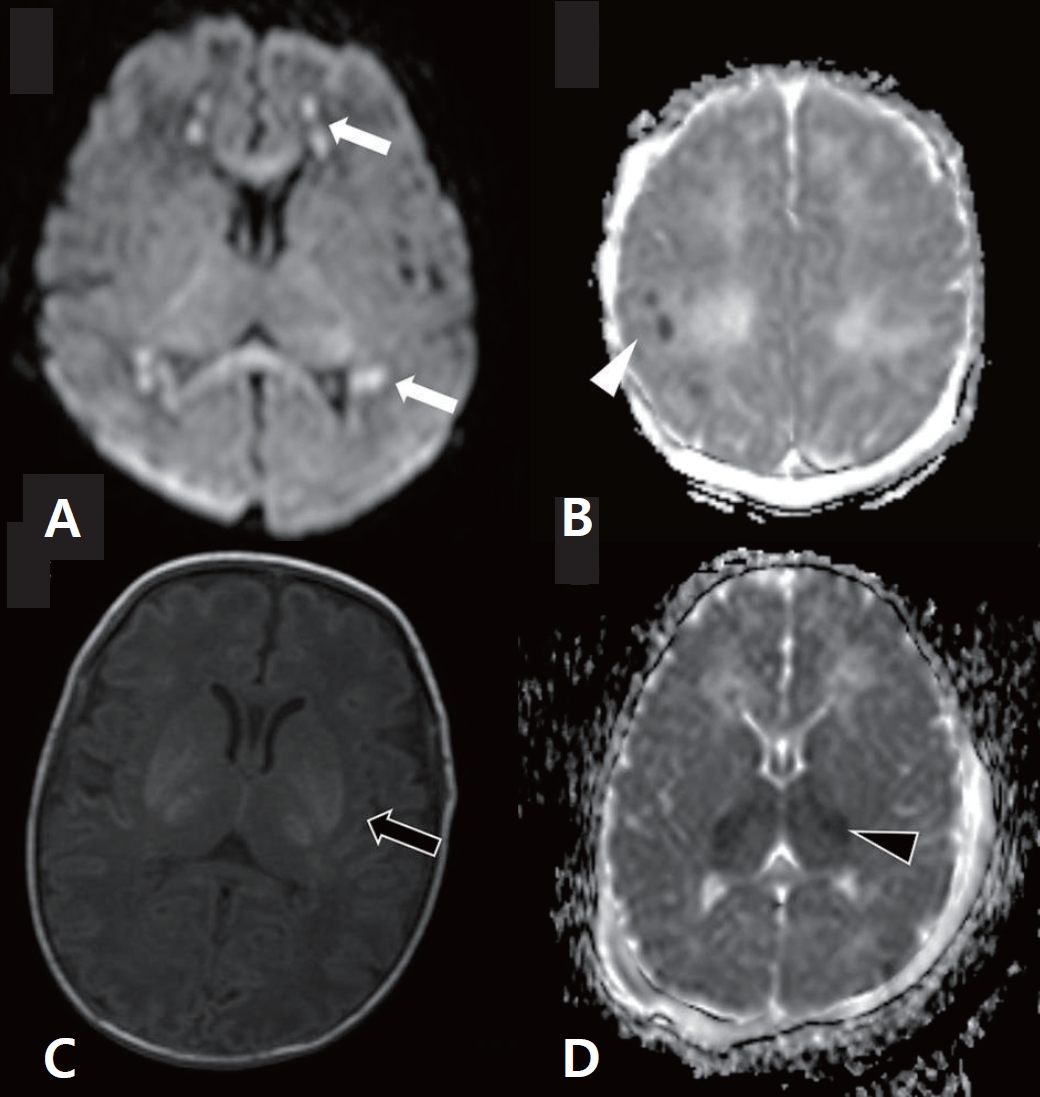
∙ Cognitive impairments occur in children with hypoxic-ischemic encephalopathy (HIE) even without neuromotor deficits.
∙ Therapeutic hypothermia has improved neurodevelopmental outcomes of children with HIE; however, 40% of children remain at risk of death/disability or cognitive impairments necessitating the development of adjunctive neuroprotective therapies.
∙ Long-term follow-up until adolescence is required to identify cognitive dysfunction.
∙ A pattern of watershed injury on brain imaging is associated with poor cognitive outcomes.
- Immunology
- Modern diagnostic capabilities of neonatal screening for primary immunodeficiencies in newborns
- Evgenia Olegovna Khalturina, Natalia Dmitrievna Degtyareva, Anastasiia Vasi’evna Bairashevskaia, Alena Valerievna Mulenkova, Anna Vladimirovna Degtyareva
- Clin Exp Pediatr. 2021;64(10):504-510. Published online March 25, 2021
-
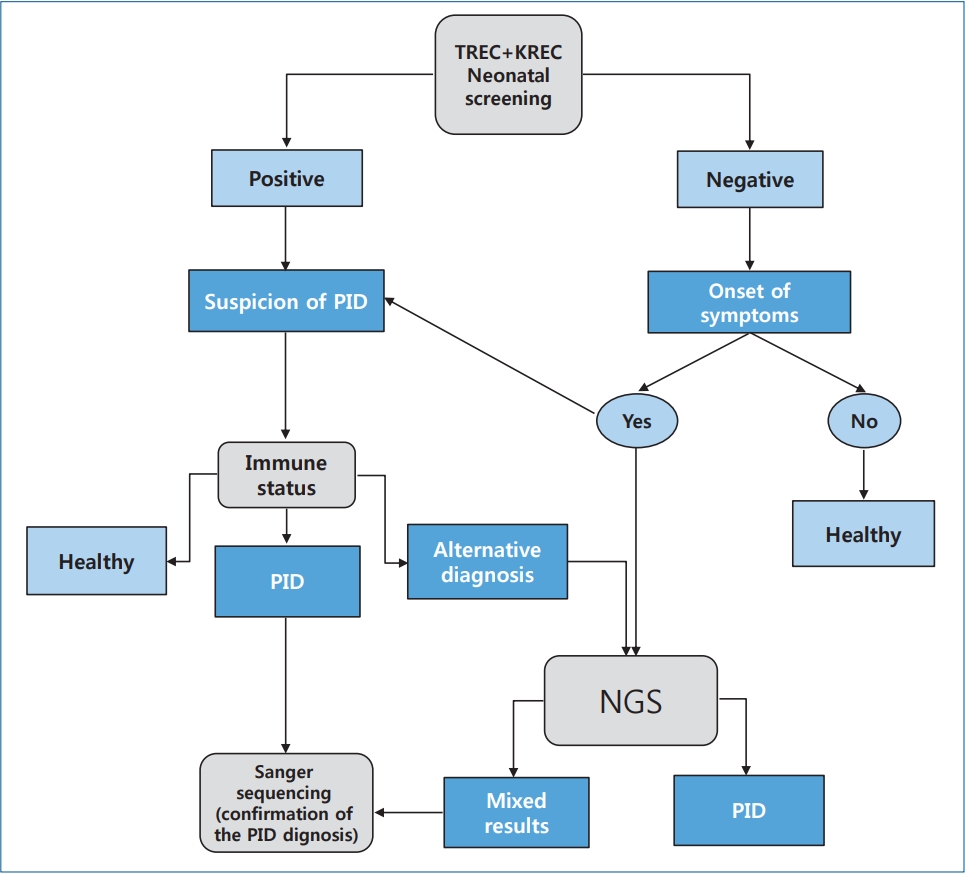
· Neonatal screening for primary immunodeficiency diseases (PIDs) enables early diagnosis and subsequent initiation of therapy.
· Excision of T-cell receptors and kappa-recombination excision circles are cheaper alternative PID screening methods.
· Sanger DNA sequencing remains the reference method for detecting PID; however, next-generation sequencing technology is increasingly used to diagnose it.
· Here we developed a graphical algorithm for diagnosing primary immunodeficiency syndrome based on modern methods of screening for primary immunodeficiencies in newborns.
- Original Article
- Neonatology (Perinatology)
- Perinatal outcome and possible vertical transmission of coronavirus disease 2019: experience from North India
- Ritu Sharma, Shikha Seth, Rakhee Sharma, Sanju Yadav, Pinky Mishra, Sujaya Mukhopadhyay
- Clin Exp Pediatr. 2021;64(5):239-246. Published online February 16, 2021
-

Question: Is there any risk of vertical transmission of coronavirus disease 2019 (COVID-19), and what is its neonatal profile?
Finding: Biological samples for vertical transmission were negative in all deliveries; however, 2 neonates tested positive for nasopharyngeal COVID-19 reverse transcription-polymerase chain reaction. No significant neonatal morbidity was observed.
Meaning: COVID-19 does not increase adverse neonatal outcomes and shows a negligible risk of vertical transmission; however, horizontal transmission cannot be underestimated.
- Other
- Evaluation of goodness of fit of semiparametric and parametric models in analysis of factors associated with length of stay in neonatal intensive care unit
- Fatemeh Kheiry, Sadegh Kargarian-Marvasti, Sima Afrashteh, Abolfazl Mohammadbeigi, Nima Daneshi, Salma Naderi, Seyed Hossein Saadat
- Clin Exp Pediatr. 2020;63(9):361-367. Published online June 10, 2020
-

Question: Hospitalization in neonatal intensive care unit (NICU) is associated with life-threatening hazards. What factors associated with neonatal length of stay (LOS) in the NICU?
Finding: Breastfeeding, phototherapy, acute renal failure (ARF), mechanical ventilation, and central venous catheter (CVC) access were identified as factors associated with NICU length of stay.
Meaning: Protective effects of breastfeeding and CVC access, whereas increase effects of phototherapy, ARF, and mechanical ventilation in LOS can be supporting evidence to establish effective interventions to reduce length of NICU stay.
- Neonatology (Perinatology)
- Risk-based maternal group B Streptococcus screening strategy is compatible with the implementation of neonatal early-onset sepsis calculator
- Niek B. Achten, J. Wendelien Dorigo-Zetsma, Annemarie M.C. van Rossum, Rianne Oostenbrink, Frans B. Plötz
- Clin Exp Pediatr. 2020;63(10):406-410. Published online April 16, 2020
-
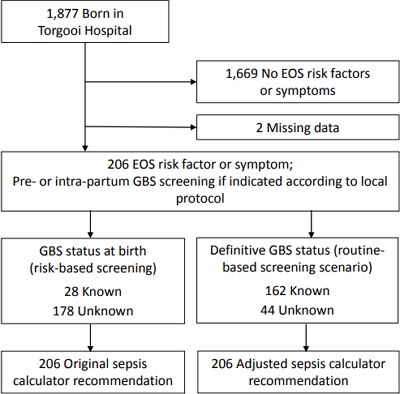
Question: To what extent does risk-based Group B Streptococcus (GBS) screening influence management recommendations by the early-onset sepsis (EOS) calculator?
Finding: In 97% of the newborn infants, the EOS calculator recommendation remained unchanged after the GBS status at birth was updated to the definitive GBS status.
Meaning: Risk-based GBS screening results are compatible with EOS calculator recommendations.
- Review Article
- Neonatology (Perinatology)
- Short- and long-term outcomes of very low birth weight infants in Korea: Korean Neonatal Network update in 2019
- Jang Hoon Lee, YoungAh Youn, Yun Sil Chang; Korean Neonatal Network
- Clin Exp Pediatr. 2020;63(8):284-290. Published online February 5, 2020
-
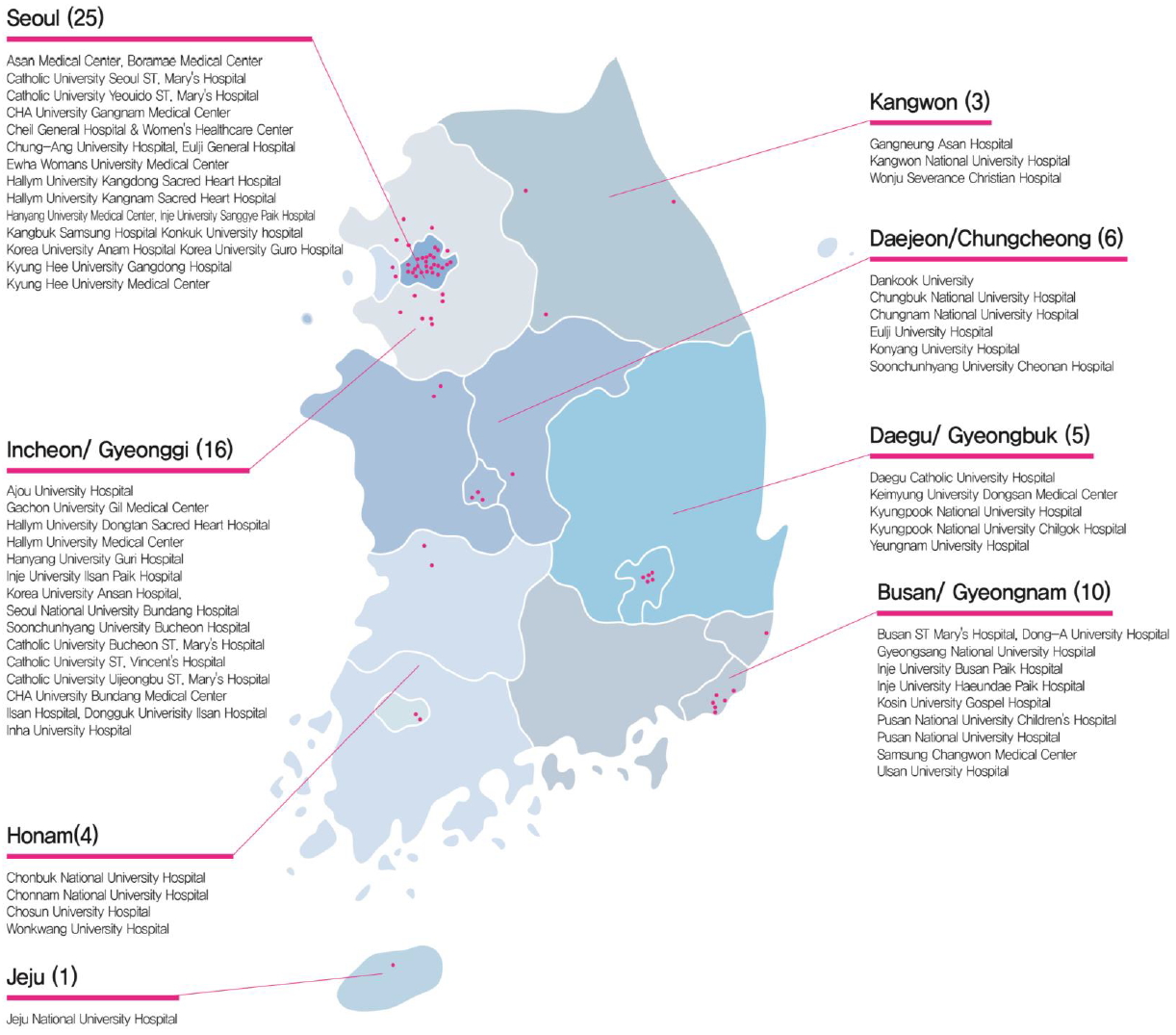
The Korean Neonatal Network (KNN) has collected population-based data for very low birth weight infants (VLBWIs) born in Korea since 2013. The survival rate of all VLBWIs was 86% in Korea. The overall prevalence of cerebral palsy was 6.2%–6.6%. Bilateral blindness and hearing loss were reported in 0.2%–0.3%, 0.8%–1.9%, respectively. The KNN has published annual reports and papers for facilitating the improvement of VLBWIs outcome in Korea.
- Systematic review and meta-analysis
- Neurobehavior
- Association between neonatal jaundice and autism spectrum disorders among children: a meta-analysis
- Ensiyeh Jenabi, Saeid Bashirian, Salman Khazaei
- Clin Exp Pediatr. 2020;63(1):8-13. Published online November 7, 2019
-
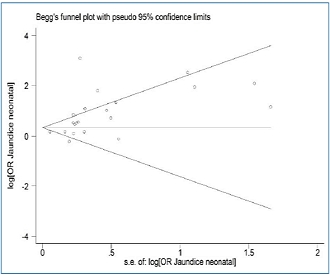
Autism spectrum disorder is a common neurodevelopmental disorder with an unknown etiology. The correlation between neonatal jaundice and the risk of developing autism spectrum disorder was investigated previously. Some studies showed significant associations, whereas others demonstrated no association. In this meta-analysis, we pooled the results of observational studies to examine the association between neonatal jaundice and the risk of autism...
- Original Article
- Neonatology (Perinatology)
- Diagnostic value of eosinopenia and neutrophil to lymphocyte ratio on early onset neonatal sepsis
- Rocky Wilar
- Clin Exp Pediatr. 2019;62(6):217-223. Published online October 8, 2018
-
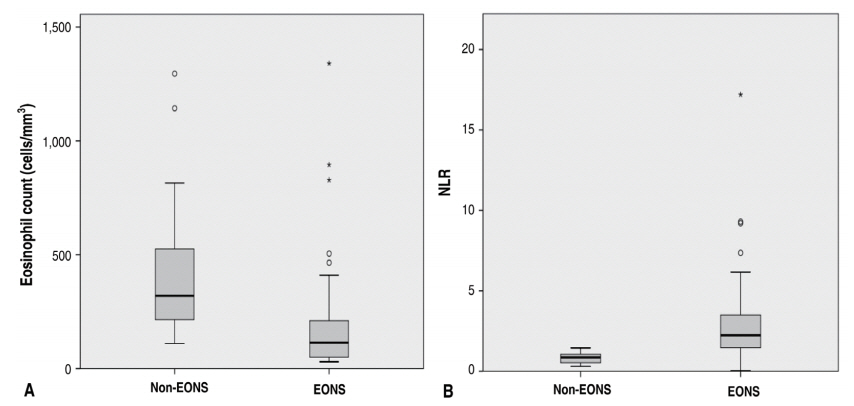
Purpose: To determine the diagnostic value of eosinopenia and the neutrophil-to-lymphocyte ratio (NLR) in the diagnosis of early onset neonatal sepsis (EONS). Methods: This cross-sectional study was conducted in the Neonatology Ward of R.D. Kandou General Hospital Manado between July and October 2017. Samples were obtained from all neonates meeting the inclusion criteria for EONS. Data were encoded using logistic regression...
- Clinical features and prognostic factors of early-onset sepsis: a 7.5-year experience in one neonatal intensive care unit
- Se Jin Kim, Ga Eun Kim, Jae Hyun Park, Sang Lak Lee, Chun Soo Kim
- Clin Exp Pediatr. 2019;62(1):36-41. Published online September 27, 2018
-
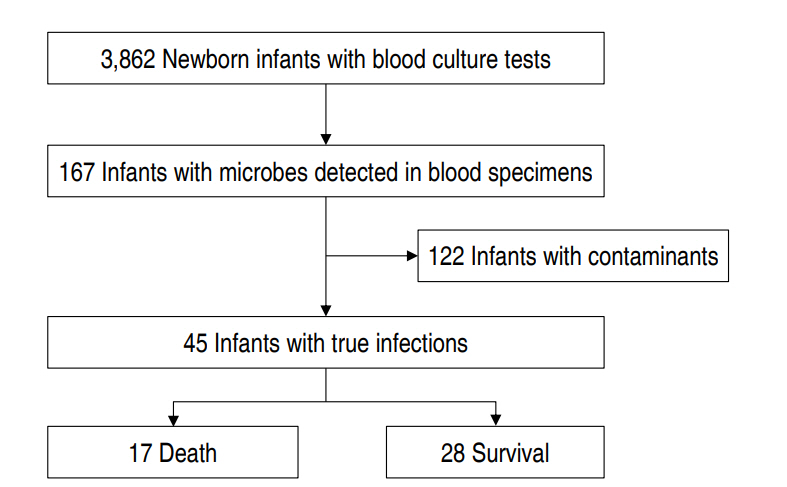
Purpose: In this study, we investigated the clinical features and prognostic factors of early-onset sepsis (EOS) in neonatal intensive care unit (NICU) patients. Methods: A retrospective analysis was conducted on medical records from January 2010 to June 2017 (7.5 years) of a university hospital NICU. Results: There were 45 cases of EOS (1.2%) in 3,862 infants. The most common pathogen responsible for...
- Genetics and Metabolism
- Neonatal indirect hyperbilirubinemia and glucose-6-phosphate dehydrogenase deficiency
- Hasan M. Isa, Masooma S. Mohamed, Afaf M. Mohamed, Adel Abdulla, Fuad Abdulla
- Clin Exp Pediatr. 2017;60(4):106-111. Published online April 25, 2017
-
Purpose This study aimed to determine the prevalence of glucose-6-phosphate dehydrogenase (G6PD) deficiency among infants with neonatal indirect hyperbilirubinemia (NIH); compare G6PD-deficient and G6PD-normal patients regarding hyperbilirubinemia and need for exchange transfusions (ET); and assess risk factors for ET and kernicterus.
Methods This is a case-control retrospective study. Medical records of NIH patients admitted to the Pediatric Department, Salmaniya Medical Complex, Bahrain, between...
- Neonatology (Perinatology)
- Experience and pharmacokinetics of Levetiracetam in Korean neonates with neonatal seizures
- Jae Won Shin, Yun Seob Jung, Kyungsoo Park, Soon Min Lee, Ho Seon Eun, Min Soo Park, Kook In Park, Ran Namgung
- Clin Exp Pediatr. 2017;60(2):50-54. Published online February 27, 2017
-

Purpose The aims of this study were to evaluate the safety and pharmacokinetics of levetiracetam (LEV) in neonates with seizures and to establish a population pharmacokinetics (PPK) model by using the software NONMEM.
Methods A retrospective analysis of 18 neonatal patients with seizures, who were treated with LEV, including 151 serum samples, was performed. The mean loading dose was 20 mg/kg, followed by...
- Case Report
- Genetics and Metabolism
- Compound heterozygous mutations of
ACADS gene in newborn with short chain acyl-CoA dehydrogenase deficiency: case report and literatures review - Se Jin An, Sook Za Kim, Gu Hwan Kim, Han Wook Yoo, Han Hyuk Lim
- Clin Exp Pediatr. 2016;59(Suppl 1):S45-S48. Published online November 30, 2016
-
Short-chain acyl-CoA dehydrogenase deficiency (SCADD) is a rare autosomal recessive mitochondrial disorder of fatty acid β-oxidation, and is associated with mutations in the acyl-CoA dehydrogenase (
ACADS ) gene. Recent advances in spectrometric screening for inborn errors of metabolism have helped detect several metabolic disorders, including SCADD, without symptoms in the neonate period. This allows immediate initiation of treatment and monitoring, so...
- Successful sulfonylurea treatment in a patient with permanent neonatal diabetes mellitus with a novel
KCNJ11 mutation - Sung Yeon Ahn, Gu-Hwan Kim, Han-Wook Yoo
- Clin Exp Pediatr. 2015;58(8):309-312. Published online August 21, 2015
-
Permanent neonatal diabetes mellitus refers to diabetes that occurs before the age of 6 months and persists through life. It is a rare disorder affecting one in 0.2-0.5 million live births. Mutations in the gene
KCNJ11 , encoding the subunit Kir6.2, and ABCC8, encoding SUR1 of the ATP-sensitive potassium (KATP) channel, are the most common causes of permanent neonatal diabetes mellitus....
- Original Article
- Thyroid dysfunction in very low birth weight preterm infants
- Ji Hoon Lee, Sung Woo Kim, Ga Won Jeon, Jong Beom Sin
- Clin Exp Pediatr. 2015;58(6):224-229. Published online June 22, 2015
-
Purpose Thyroid dysfunction is common in preterm infants. Congenital hypothyroidism causes neurodevelopmental impairment, which is preventable if properly treated. This study was conducted to describe the characteristics of thyroid dysfunction in very low birth weight infants (VLBWIs), evaluate risk factors of hypothyroidism, and suggest the reassessment of thyroid function with an initially normal thyroid-stimulating hormone (TSH) as part of a newborn...
- Case Report
- Asymptomatic maternal 3-methylcrotonylglycinuria detected by her unaffected baby's neonatal screening test
- Sun Hee Lee, Yong Hee Hong
- Clin Exp Pediatr. 2014;57(7):329-332. Published online July 23, 2014
-
3-methylcrotonyl-coenzyme A carboxylase (3MCC) deficiency is an autosomal recessive disorder in which leucine catabolism is hampered, leading to increased urinary excretion of 3-methylcrotonylglycine. In addition, 3-hydroxyisovalerylcarnitine levels increase in the blood, and the elevated levels form the basis of neonatal screening. 3MCC deficiency symptoms are variable, ranging from neonatal onset with severe neurological abnormality to a normal, asymptomatic phenotype. Although...
- X-linked recessive myotubular myopathy with
MTM1 mutations - Young-Mi Han, Kyoung-Ah Kwon, Yun-Jin Lee, Sang-Ook Nam, Kyung-Hee Park, Shin-Yun Byun, Gu-Hwan Kim, Han-Wook Yoo
- Clin Exp Pediatr. 2013;56(3):139-142. Published online March 18, 2013
-
X-linked recessive myotubular myopathy (XLMTM) is a severe congenital muscle disorder caused by mutations in the
MTM1 gene and characterized by severe hypotonia and generalized muscle weakness in affected males. It is generally a fatal disorder during the neonatal period and early infancy. The diagnosis is based on typical histopathological findings on muscle biopsy, combined with suggestive clinical features. We...
- Original Article
- Parental concerns about their premature infants' health after discharge from the neonatal intensive care unit: a questionnaire survey for anticipated guidance in a neonatal follow-up clinic
- Ji-Yun Cho, Juyoung Lee, Young Ah Youn, Soon Ju Kim, So Young Kim, In Kyung Sung
- Clin Exp Pediatr. 2012;55(8):272-279. Published online August 23, 2012
-
Purpose The aim of this study was to develop an appropriate nursing information guideline according to corrected age, after investigating parents' concerns about the growth, development, and diseases of their premature infants after discharge from the neonatal intensive care unit (NICU).
Methods The parents of premature infants (birth weight, <2,500 g; gestational age, <37 weeks) who went to a neonatal follow-up clinic after...
- Comparison of the accuracy of neutrophil CD64 and C-reactive protein as a single test for the early detection of neonatal sepsis
- Young Kwang Choo, Hyun-Seok Cho, In Bum Seo, Hyeon-Soo Lee
- Clin Exp Pediatr. 2012;55(1):11-17. Published online January 31, 2012
-
Purpose Early identification of neonatal sepsis is a global issue because of limitations in diagnostic procedures. The objective of this study was to compare the diagnostic accuracy of neutrophil CD64 and C-reactive protein (CRP) as a single test for the early detection of neonatal sepsis.
Methods A prospective study enrolled newborns with documented sepsis (n=11), clinical sepsis (n=12) and control newborns (n=14). CRP,...
- Review Article
- Changes in the neonatal and infant mortality rate and the causes of death in Korea
- Sung-Hoon Chung, Yong-Sung Choi, Chong-Woo Bae
- Clin Exp Pediatr. 2011;54(11):443-455. Published online November 30, 2011
-
Neonatal mortality rate (NMR) or infant mortality rate (IMR) are the rate of deaths per 1,000 live births at which babies of either less than four weeks or of one year of age die, respectively. The NMR and IMR are commonly accepted as a measure of the general health and wellbeing of a population. Korea's NMR and IMR fell significantly...
Ureaplasma infections in pre-term infants: Recent information regarding the role ofUreaplasma species as neonatal pathogens- Tae-Jung Sung
- Clin Exp Pediatr. 2010;53(12):989-993. Published online December 31, 2010
-
Although numerous clinical observational studies have been conducted over a period of over 30 years, the clinical significance of
Ureaplasma infection is still under debate. TheUreaplasma speices. is a commensal in the female genital tract and considered to have of low virulence; however,Ureaplasma colonization has been associated with infertility, stillbirth, preterm delivery, histologic chorioamnionitis, and neonatal morbidities, including...
- Original Article
- The risk factors and prognosis associated with neonatal pulmonary hemorrhage
- Su Jin Park, Ki Tae Yun, Won Duck Kim, Sang Geel Lee
- Clin Exp Pediatr. 2010;53(4):503-509. Published online April 15, 2010
-
Purpose : Although neonatal pulmonary hemorrhage is rare, it is associated with high mortality. We aimed to evaluate the risk factors associated with pulmonary hemorrhage in preterm infants and to describe the clinical course, including neonatal morbidity, of infants who developed pulmonary hemorrhage. Methods : We performed a retrospective case-control study of 117 newborn infants aged less than 37 gestational weeks admitted... -
- Case Report
- Transient neonatal diabetes mellitus with macroglossia diagnosed by methylation specific PCR (MS-PCR)
- Hye Young Jin, Jin-Ho Choi, Gu-Hwan Kim, Han-Wook Yoo
- Clin Exp Pediatr. 2010;53(3):432-436. Published online March 15, 2010
-
Transient neonatal diabetes mellitus (TNDM) has been associated with paternal uniparental isodisomy of chromosome 6, paternally inherited duplication of 6q24, or a methylation defect at a CpG island of the ZAC or HYMAI gene. We experienced a case of TNDM in which the patient presented with hyperglycemia, macroglossia, and intrauterine growth retardation, caused by a paternally derived HYMAI. An 18-day-old... -
- Original Article
- Spectrum of patients with hypermethioninemia based on neonatal screening tests over 14 years
- Se Jung Oh, Yong Hee Hong, Yong Wha Lee, Dong Hwan Lee
- Clin Exp Pediatr. 2010;53(3):329-334. Published online March 15, 2010
-
Purpose : The neonatal screening test for homocystinuria primarily measures methionine by using a dried blood specimen. We investigated the incidence and clinical manifestations of homocystinuria, isolated hypermethioninemia, and transient hypermethioninemia among patients with hypermethioninemia on a neonatal screening test. Methods : We performed a retrospective study of 58 patients transferred to Shoonchunhyang Hospital because of hypermethioninemia on a neonatal... -
- Review Article
- Neonatal respiratory distress: recent progress in understanding pathogenesis and treatment outcomes
- So Young Kim
- Clin Exp Pediatr. 2010;53(1):1-6. Published online January 15, 2010
-
Transient tachypnea of the newborn (TTN), respiratory distress syndrome (RDS), and persistent pulmonary hypertension (PPHN) are the three most common disorders that cause respiratory distress after birth. An understanding of the pathophysiology of these disorders and the development of effective therapeutic strategies is required to control these conditions. Here, we review recent papers on the pathogenesis and treatment of neonatal... -
- Original Article
- Thyroid dysfunction in premature infants
- Ki Bae Hong, Ji Yun Park, Young Pyo Chang, Jeesuk Yu
- Clin Exp Pediatr. 2009;52(9):991-998. Published online September 15, 2009
-
Purpose:Thyroid hormone is essential for development of the brain in early life. Thyroid dysfunction is more common in the first 2-4 postnatal weeks of life in premature infants than in term infants. This study aimed to identify the prevalence and clinical course of thyroid dysfunction in prematurity. Methods:Premature infants admitted to and given neonatal screenings at Dankook University Hospital between... -
-

-
-

-

-
Impact Factor4.2
-
6.52022CiteScore92nd percentilePowered by







